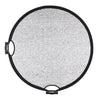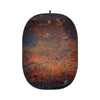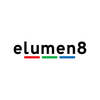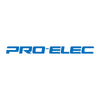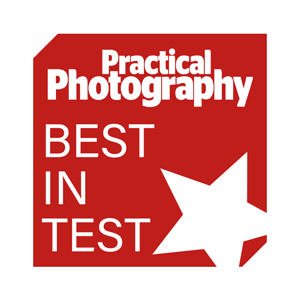"About Me
I feel that I need to start with a disclaimer. I am not a professional photographer nor am I in any way an expert in flash photography. I am, however, a passionate amateur who enjoys shooting in the studio and creating images using flash.
Flash photography started for me through using speedlights, as it probably does for many. It became obvious after a while though, that they do have limitations due to their size and following my first time in a “proper” studio on a dance photography day, I was hooked! The search then began for some equipment that would be suitable to use in either my limited space at home or in a larger studio space.
After probably too many hours of researching on the net I equipped myself over time with four lights from EssentialPhoto; a Twin LUMI400 Complete Kit with Trigger and two PIKA200 Pros. This blog is intended to try and help others starting out in studio flash photography with choosing suitable equipment, through an explanation of my selections and how I use them in my photography.
Twin LUMI400 Kit
I bought the LUMI400 Twin Softbox Kit on the basis of the power of the strobe units (and the fantastic value for money offered by the kit). This is, essentially, a complete studio in a bag- a very nice bag too, with wheels, which is useful as all this kit is heavy. These 400ws units are the most powerful LUMI units (there is also a 200ws version) and I chose these on the basis that whilst I shoot portraits at home, I do occasionally hire a local studio space for dance photography. I felt that the more powerful units would ensure that I always had sufficient power in the lights.

This kit is pretty much all that is required to get you going with high quality studio portraits. It’s my go-to kit when I hire a studio space, simply because whenever I shoot anywhere away from home, I almost always forget something. With this kit that worry goes away because it’s always all there in the bag so as long as I have the camera and backdrop as well I know that I’m good to go.
One consideration with these lights is that they are manual strobes: there is no TTL functionality. Getting the correct exposure is therefore a case of trial and error, or, if you have the budget for it, it is well worth considering adding a flash meter to your kit to save set up time.

Once set up, these are great for portraits and the two lights allow a lot of choices. I enjoy dance photography in the studio, and for static poses I often use the two LUMIs either angled at approximately 45 degrees to each side of the model, or at 90 degrees either side for a more dramatic shadowy image.
For a more high key look I add the two PIKA200 Pros in Umbrella Octaboxes to light the white backdrop as illustrated in the behind the scenes view from a recent dance shoot with my daughter.

This set up gave a bright image with minimal shadow as illustrated above.
Switching off the PIKAs and moving the LUMIs around to 90 degrees either side of the camera and adding the grids produced a very different look and feel to the images as can be seen here.

To me this illustrates one of the major benefits of this type of lighting. Simple changes can make a dramatic difference to the end result so the photographer is limited only by their imagination and willingness to experiment
PIKA200 Pro
If you want a powerful, high spec yet incredibly compact light, then the PIKA200 is just the job. These rechargeable units are very quick and easy to set up and allow TTL shooting, so you can be up and running in a couple of minutes. They also offer a full range of flash features such as high speed sync, multiple flashes etc. Whilst less powerful than the LUMI units, they do offer a high degree of lighting control with a range adjustable from full down to 1/256 power
I find these to be really useful when I am shooting in the smaller space that I have at home and need to be quickly set up and ready to go. Whenever I shoot portraits of our dog these will be the go-to flash. He doesn’t have the greatest attention span (even when there are treats on offer) so the ability to use TTL is an absolute must. This image was shot at home with a single PIKA200 Pro in a softbox at approximately 45 degrees to the left of camera.

One thing to consider with these units, especially for an amateur photographer is the cost. Whilst these units do look a bit like an overgrown speedlight, they are much more powerful, and cannot be mounted to the camera, so the flash unit itself is just the start. You will also need a trigger, stand and if you want to use a range of modifiers, an additional Bowens mount bracket. If it suits your budget though, these are great flashes which are extremely versatile.
They come supplied with two alternative heads. I always use the bare bulb head, rather than the speedlite fresnel head, as I am always using some form of modifier and I feel this probably distributes the light better within it.
Two lights can be quickly set up to give some separation of the subject from the background, although not quickly enough in this case as my somewhat impatient model chose to turn too far so I lost the catchlight in the eye.

Another benefit that that PIKA brings is a very short flash duration, especially at low power levels. This may be an important consideration for you as it allows you to freeze motion and create some interesting effects.

Pouring or dripping liquids can make an interesting subject. In this case I set up a light in a soft box behind the subject, facing the camera. The flash was set to its minimum power of 1/256th to get the shortest possible flash duration which was sufficiently fast to capture individual falling droplets of water. With a bit of practice (or just good luck) it was possible to achieve some pleasing results.
It is also worth mentioning how portable yet powerful the PIKAs are, especially if you are considering one of these as an alternative to a speedlight. Outdoor shooting using a shaded area and flash can turn day into night.

I shot this dramatic portrait of a BMW 420 Gran Coupe in daylight, deliberately underexposing the base image to darken the background. The car was then lit with 6-8 shots taken with a PIKA fitted with a seven inch reflector moved to a number of different locations around the car. All of the images were later combined in Photoshop to give the final version shown above.
Final Thoughts
If you are interested in flash photography, there are many options available depending on your budget. If you want an easy to set up instant studio kit to produce professional looking images, then the LUMI Twin Kit offers a superb value for money solution. There is everything required to get started with portrait photography with the choice of either 200ws or 400ws strobe units.
If portability is important to you, the PIK200 Pro offers a compact solution with a wide range of features. Setting up and getting the correct exposure is quick as the strobe unit has TTL capability, but bear in mind that you will need stands, modifiers and a trigger to make use of the strobe.
Over time I have collected both types of unit and as I have tried to show above, I have different uses for each one. Combined, they give a huge range of potential subjects and situations where I can use these great value studio strobes."
Blog written by Simon Wilkinson. If you'd like to see more of Simon's work, visit his website.
For more information about any of the equipment recommended in this blog, please get in touch with our team at info@essentialphoto.co.uk to speak to our Product Advisor.

























































































































